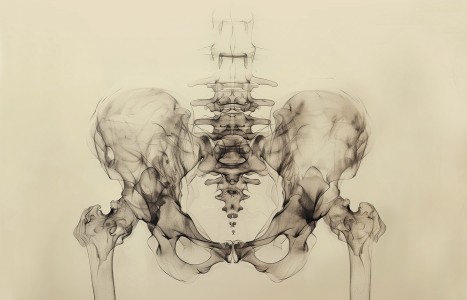People today want convenience, whether it be from their bank, credit card, favorite retail store, or restaurant. They demand it from the companies who hold their loyalty, including their health care providers (you). They don’t want to call and possibly be put on hold, and they want to use an app or schedule an appointment on your website. Here are three reasons your practice can gain by switching to online appointment scheduling.
Training Non-Acupuncturists to Provide Care: Experience of the Pan-African Acupuncture Project
The long-standing debate over who can and should be allowed to practice acupuncture has spanned decades and continents. Many vehemently oppose the practice of acupuncture by clinicians who have not received formal acupuncture training, based on reasons of professional integrity, standards of care and the authenticity of diagnostic traditions. The debate has evolved to a new level in recent years, related to ethical dilemmas arising during emergency situations and within impoverished countries with limited access to health care.
The National Acupuncture Detoxification Association (NADA) certification of "Acupuncture Detoxification Specialist (ADS)"1 has provided training to more than 10,000 health professionals, including counselors, social workers, nurses, medical doctors, psychologists, acupuncturists, chiropractors, outreach workers, drug-court judges and correctional officers. Despite more than 20 years of success, NADA-trained detox specialists can only practice in about half of the states in the U.S. NADA representative Jay Renaud suggested the work of these specialists complements and promotes the profession and is not "in competition with private practitioners." In additional to NADA, other U.S.-based organizations like Acupuncturists Without Borders and the Pan African Acupuncture Project (PAAP) have followed suit by embracing ADS or the training of nonacupuncture-schooled providers.
PAAP has now trained more than 120 Ugandan health workers to use acupuncture to help their patients with HIV/AIDS, tuberculosis and malaria. Responding to an invitation six years ago from public health advocates in Kampala, the nation's capital, PAAP has been involved in teaching protocols and procedures for treating people with a variety of conditions that affect health and quality of life. To date, more than 1,000 individuals have received treatment provided by PAAP and its trainees.
PAAP has elements in common with projects such as the Guatemala Medical Acupuncture Project (GUAMAP) and NADA. By training local health workers to integrate acupuncture into their practices, the benefits of treatment can be extended to individuals who may not have access to acupuncture or even other types of health care.
Richard Mandell, founder of the organization, describes the source of his inspiration for creating PAAP: "The foundation for PAAP was my involvement with creating the AIDS Care Project (ACP) in Boston in the late 1980s. The severity of the AIDS epidemic in Sub-Saharan Africa came to international attention around 2001. My immediate reaction was to go to Africa to begin treating those who were HIV-positive, but I realized the naiveté of this response. There was no way that one individual would ever be able to make any significant change."
Mandell believes "Empowering people by teaching them how to use this simple yet powerful treatment modality would lead to a rapid increase in the access to acupuncture." This assumption has proven to be accurate.
Uganda's population, slightly over 28 million, reflects a variety of health challenges, including the hardships of poverty. Gross national income per capita is approximately $1,500, and life expectancy is between 42 to 44 years of age.2 Each physician in the country serves more than 18,000 individuals, and less than half of Uganda's residents have access to care. Per-capita health expenditure is approximately $12 (U.S.).
According to the Ugandan Ministry of Health, conditions such as diarrhea, respiratory ailments, infections and malaria are highly prevalent, significantly contributing to morbidity and health-related quality of life.3 The World Health Organization estimated that as of 2005, HIV/AIDS had infected approximately 1 million adults and children, and left over 1 million living orphans without their mother, father or both parents.4
Uganda is unique in that it is the only country in the world that has been able to successfully diminish HIV/AIDS prevalence. Thanks to an aggressive public health campaign that affected all sectors of the media, governmental departments and public policy, HIV prevalence peaked in 1991 for pregnant women and by 1995, prevalence estimates dropped overall.5
Acupuncture is not generally available in Uganda, since there are very few acupuncturists who, for the most part, practice in private clinics. Medical and public health officials have been very open to integrating acupuncture into the few therapeutic options that are available. Mandell reports, "There was never any resistance to acupuncture - not by Uganda's Ministry of Health, medical practitioners or the thousands of patients who have come for treatment. Ugandans have a history of seeking and receiving treatment from traditional healers and Western doctors, and focus on the desire to feel better and continue to be active members of their community. All of this contributes to an aura of acceptance."
Physicians, nurses, midwives, physical therapists and traditional healers have participated in the 12 trainings that have been offered to date. Trainings proceed at two levels including an introductory course for those who are new to acupuncture and an advanced course for those who have been trained in PAAP's previous visits. PAAP chooses both urban and rural facilities and groups for training. The great popularity of the training has ensured an ongoing source of individuals interested in learning to use acupuncture. Trainings have occurred in five districts of the country - Kampala, Mbale, Mbarara, Masaka and Ibanda - and PAAP's goal is to provide three training sessions annually.
PAAP is doing some cutting-edge work with Traditional Healers and Modern Practitioners Together Against AIDS (THETA), an association of traditional healers and physicians who work jointly to address the health care challenges of the HIV/AIDS epidemic. Mandell described the nature of their collaboration: "PAAP hopes to work with THETA on two projects. The first will begin in July, when we will begin to train a group of traditional healers how to use our simple acupuncture protocols to address the many conditions they encounter. In fact, we trained a traditional healer during our very first session in 2003. What was remarkable was how readily he understood and embraced acupuncture. It seemed to clearly demonstrate a convergence of theories and approaches to healing. We are very excited about sharing our visions of health, illness, and treatment." PAAP and THETA also hope to partner in creating a holistic clinic that will include such modalities as Western medicine, traditional healing practices, acupuncture and homeopathy.
From PAAP's recent training in spring 2007, records were available for 121 patients who received treatment. These patients ranged in age from 14 to 78 years of age, and most did not have formal diagnoses of their ailments. Many sought relief from pain, and almost half reported multiple reasons for seeking treatment. Almost all reported favorable results in terms of minimizing their symptoms and feeling better.
The success of this program, as seen by its growth, acceptance and clinical efficacy, demonstrates that the training of health professionals can be a valid, reliable and readily adaptable model in different cultural settings. Sharing knowledge and training has powerfully enriched the practices of the international acupuncturists who have provided the Ugandan trainings and improved the quality of life for the patients who have been treated.
For additional information about PAAP, readers may visit their Web site at www.panafricanacupuncture.org.
References
- Available online at www.acudetox.com. (Accessed 6/28/07)
- Available online at www.who.int/countries/uga/en. (Accessed 6/17/07)
- Available online at www.health.go.ug/docs/abstract2001.pdf. (Accessed 5/28/07)
- Available online here. (Accessed 5/28/07)
- Available online at www.avert.org/aidsuganda.htm. (Accessed 5/28/07)


